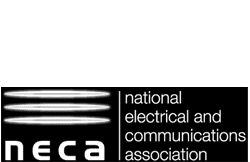A Basic Understanding of Emergency Lighting
18 November 2021Buildings and structures are often filled with different types of lights to make sure that some of their key features and spaces are illuminated very well. Some types of lights that are installed in these places are ambient lights, task lights, and accent lights.
Ambient lights are lights that are designed to illuminate the entire room or outdoor space uniformly. With the presence of these lights, people can move from one place to another without bumping others. Task lights, alternatively, are intended to illuminate specific areas within the room. Through these lights, people can conduct activities and tasks without any issues. Accent lights, ultimately, are lights that light up select points of interest. They often shine a light on features that can make the building enticing.
All the previously stated lights can help in maintaining the functionality and appeal of your property. But before installing them, you may want to invest in emergency lights first.
An Overview of Emergency Lighting
Emergency lighting, as its name implies, is a type of lighting that illuminates emergency routes and exits once the normal lights lost their power. Usually, ambient, task, and accent lights can illuminate spaces as long as electrical power is present. But once a building loses power, these lights cannot illuminate the surroundings anymore. Emergency lights, fortunately, can help give enough lighting to people who are evacuating or exiting the premises during emergencies.
Emergency Lighting’s Key Aspects
Typically, there are three aspects of emergency lighting that you must know. They are escape route lighting, open area lighting, and high-risk task area lighting.
Escape routing lights are emergency lights that allow people to evacuate the property safely. Most of these lights are situated on corridors and stairways. They can likewise be found where fire-fighting tools and equipment pieces are located. Open area lights, on the other hand, are emergency lights that are installed in places with a huge common or public area. Malls, museums, and others maximise these lights so that emergency evacuation can be conducted orderly.
Lastly, high-risk task area lights are specific emergency lights that ensure the safety of people who often work in high-risk task areas. These lights are mostly found in industrial properties.
Basic Places for Emergency Lights
Emergency lights can only be effective on your property if you have installed them in the right places. To ensure that your property will be safe during emergencies, you must install emergency lights on each exit door, all escape routes, and on the outside of each final exit and escape route. Corridor intersections, floor level transitions, and stairways must also be equipped with the right emergency lights. Other places that require emergency lights are windowless rooms, fire alarm call points, and lifts.
Once emergency lights are installed on your property, you must ensure that they are tested and maintained regularly so they can work whenever necessary. To gain access to emergency lights, you can contact us at Electroscope. We are an industry-leading electrical services company for commercial, industrial, and retail sectors throughout Melbourne and Victoria.
Optimized by: Netwizard SEO


